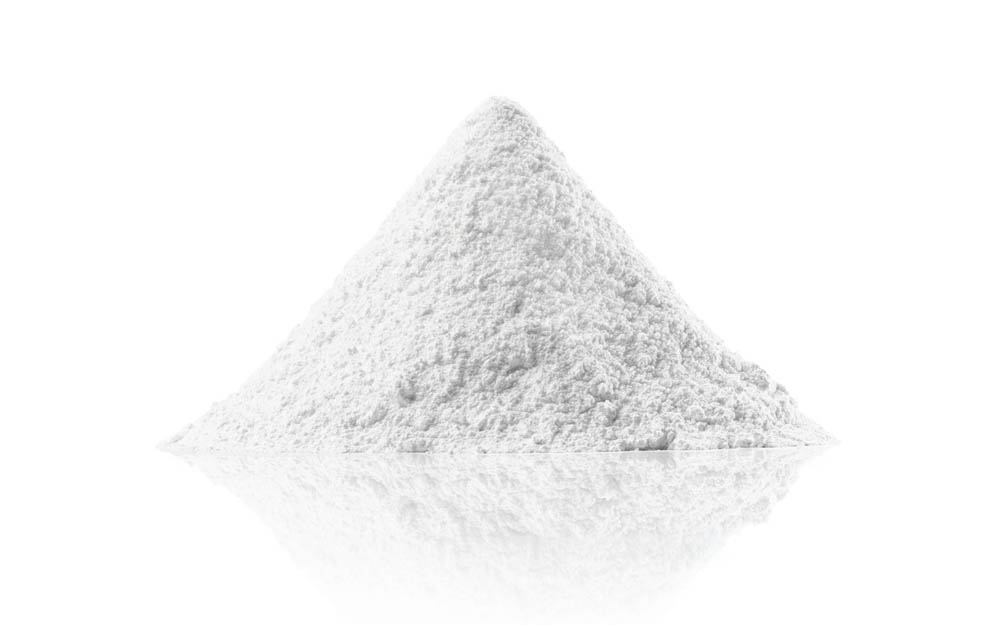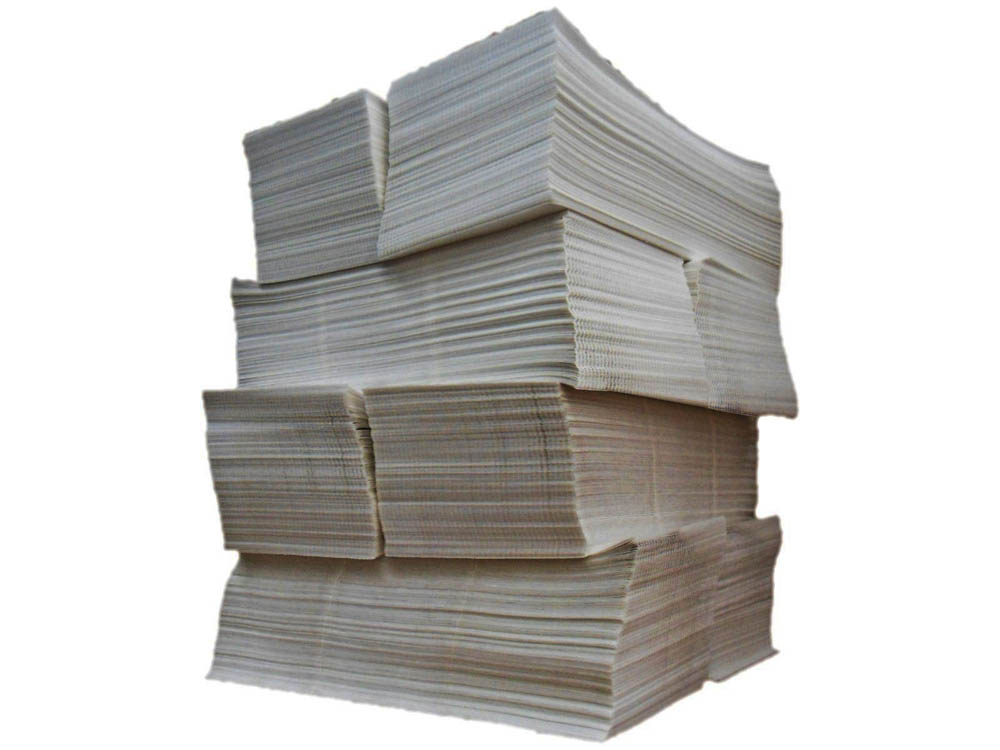

Talc Powder
 Talc is a mineral composed of hydrated magnesium silicate with the chemical formula H2Mg3 (SiO3)4. Talc is a soft, low abrasive, flat-like particle, chemically inert and organophilic material. It has a clear or dusty luster, and is translucent to opaque.
Talc is a mineral composed of hydrated magnesium silicate with the chemical formula H2Mg3 (SiO3)4. Talc is a soft, low abrasive, flat-like particle, chemically inert and organophilic material. It has a clear or dusty luster, and is translucent to opaque.
Calcium carbonate is used in wide range of applications such as paints, coatings, plastics, adhesives, sealants, paper industry, cement, drilling, and glazes.
 Talc is practically insoluble in water and in weak acids and alkalis. It is neither explosive nor flammable. Although it has very little chemical reactivity, talc does have a marked affinity for certain organic chemicals, i.e. it is organophilic. Talc's melting point is at 1500°C, It has a specific gravity of 2.5–2.8.
Talc is practically insoluble in water and in weak acids and alkalis. It is neither explosive nor flammable. Although it has very little chemical reactivity, talc does have a marked affinity for certain organic chemicals, i.e. it is organophilic. Talc's melting point is at 1500°C, It has a specific gravity of 2.5–2.8.
Field of Applications
Ceramics:
 Talc is a phyllosilicate, which imparts a wide range of functions to floor and wall tiles and sanitary ware, tableware, refractories and technical ceramics. Talc is also used to produce low expansion ceramics, for example thermal shock resistant stoneware bodies. In this, it acts as a low expansion flux that reduces body expansion. In refractory applications, chlorite-rich talc is transformed into cordierite to improve thermal shock resistance. During firing, the talc is transformed into enstatite, which possesses electro-insulating properties. As for very low iron content talcs, they are particularly suitable for use in frit, engobe and glaze compositions.
Talc is a phyllosilicate, which imparts a wide range of functions to floor and wall tiles and sanitary ware, tableware, refractories and technical ceramics. Talc is also used to produce low expansion ceramics, for example thermal shock resistant stoneware bodies. In this, it acts as a low expansion flux that reduces body expansion. In refractory applications, chlorite-rich talc is transformed into cordierite to improve thermal shock resistance. During firing, the talc is transformed into enstatite, which possesses electro-insulating properties. As for very low iron content talcs, they are particularly suitable for use in frit, engobe and glaze compositions.
Coatings
 Talc brings a whole range of benefits to coatings. In interior and exterior decorative paints, it acts as extender to improve hiding power and titanium dioxide efficiency. Talc's lamellar platelets make paint easier to apply and improve cracking resistance and sagging. It also enhances matting. In anti-corrosion primers, talc is used to improve corrosion resistance and paint adhesion. Talc also brings benefits to inks, jointing compounds, putties and adhesives.
Talc brings a whole range of benefits to coatings. In interior and exterior decorative paints, it acts as extender to improve hiding power and titanium dioxide efficiency. Talc's lamellar platelets make paint easier to apply and improve cracking resistance and sagging. It also enhances matting. In anti-corrosion primers, talc is used to improve corrosion resistance and paint adhesion. Talc also brings benefits to inks, jointing compounds, putties and adhesives.
Paper
 Talc is used in both uncoated and coated rotogravure papers where it improves printability as well as reducing surface friction, giving substantial improvements in productivity at the paper mill and print house. It also improves mattness and reduce ink scuff in offset papers. Used as pitch control agents, talc "cleans" the papermaking process by adsorbing any sticky resinous particles in the pulp onto their platy surfaces, thereby preventing the agglomeration and deposition of these on the felts and calenders.
Talc is used in both uncoated and coated rotogravure papers where it improves printability as well as reducing surface friction, giving substantial improvements in productivity at the paper mill and print house. It also improves mattness and reduce ink scuff in offset papers. Used as pitch control agents, talc "cleans" the papermaking process by adsorbing any sticky resinous particles in the pulp onto their platy surfaces, thereby preventing the agglomeration and deposition of these on the felts and calenders.
Personal Care
 As it is soft to the touch and inert, talc has been valued for centuries as a body powder. Today it also plays an important role in many cosmetic products, providing the silkiness in blushes, powder compacts and eye shadows, the transparency of foundations and the luster of beauty creams. In pharmaceuticals, talc is an ideal excipient, used as a glidant, lubricant and diluent. Soap manufacturers also use talc to enhance skin care performance.
As it is soft to the touch and inert, talc has been valued for centuries as a body powder. Today it also plays an important role in many cosmetic products, providing the silkiness in blushes, powder compacts and eye shadows, the transparency of foundations and the luster of beauty creams. In pharmaceuticals, talc is an ideal excipient, used as a glidant, lubricant and diluent. Soap manufacturers also use talc to enhance skin care performance.
Plastics
 Talc imparts a variety of benefits to polypropylene, for instance higher stiffness and improved dimensional stability. In automotive parts (under-the-hood, dashboard, bumper interiors and exterior trim), and household appliances. Talc also is used for linear low density polyethylene (LLDPE) antiblocking and as a nucleating agent in semicrystalline polymers. In polypropylene food packaging applications, talc is a highly effective reinforcing filler.
Talc imparts a variety of benefits to polypropylene, for instance higher stiffness and improved dimensional stability. In automotive parts (under-the-hood, dashboard, bumper interiors and exterior trim), and household appliances. Talc also is used for linear low density polyethylene (LLDPE) antiblocking and as a nucleating agent in semicrystalline polymers. In polypropylene food packaging applications, talc is a highly effective reinforcing filler.
Wastewater Treatment
 Specialty talc can improve the performance of biological wastewater treatment plants. The talc particles ballast the flocs of bacteria and accelerate their sedimentation. The addition of talc results in top quality discharge and zero bacterial loss. It can help to upgrade plants without resorting to costly plant expansions. As opposed to most chemicals used to clean wastewater, such as chlorine or aluminium salts, talc is a natural, environmentally-friendly mineral additive. In addition, because it is inert, it preserves the fertilizing value of sewage sludge.
Specialty talc can improve the performance of biological wastewater treatment plants. The talc particles ballast the flocs of bacteria and accelerate their sedimentation. The addition of talc results in top quality discharge and zero bacterial loss. It can help to upgrade plants without resorting to costly plant expansions. As opposed to most chemicals used to clean wastewater, such as chlorine or aluminium salts, talc is a natural, environmentally-friendly mineral additive. In addition, because it is inert, it preserves the fertilizing value of sewage sludge.
TECHNICAL DATA SHEETS
Calcium Carbonate | Talc Powder | phosphate | Silica Sand | PVC Compounds | DOP | Butyl Acetate | PP | PET